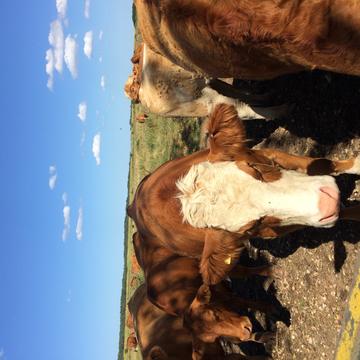How can we better bridge divides about the futures of our diets?
An interview with Professor Jamie Lorimer
As someone who grew up in the Scottish countryside, Professor Jamie Lorimer was interested in landscapes from a young age. He became fascinated by how landscapes were changing under approaches to reconcile wildlife and conservation in the early 2000s. 'Who has authority? Who has influence? Who do people trust?' he asks of the complexities of power that exist in conservation and biodiversity spaces. Apprehension to certain styles of conservation existed within rural communities affected by new conservation and biodiversity methods, and things were becoming increasing antagonistic towards their proponents. 'I was interested in the stories science tells about itself and how different they are from the reality on the ground', he explains. 'Biodiversity was supposed to be this all-seeing interest in the wonders of nature, but it was largely focused on charismatic species. So my work has focused on what makes a species charismatic, why do we favour some organisms over others? What are the properties of a panda that makes it particularly powerful as a tool for conservation? What falls through the cracks if we spend all our money on pandas? Or tigers or lions or elephants or birds?' he asks.

Focusing on the socio-cultural dimensions of emerging environmental ideas, identifying the winners and losers, including projects on rewilding, the microbiome, and now, cattle in the landscape, has been Professor Lorimer's particular focus. Following his PhD at the University of Bristol, and postdoctoral work at Oxford, Lorimer taught at Kings College London, before returning to Oxford and becoming involved in the LEAP (Livestock, Environment and People) project. Together with Dr Tara Garnett, Professor Lorimer led work that explored alternative proteins, particularly plant-based meat and milk substitutes. 'There is a fantastic cognitive dissonance between people knowing that there are bad things happening in the food system and people putting stuff in their mouths,' he tells me, 'particularly if it does not look like any animal or plant'. It is one aspect of what makes food systems change so difficult.
There is a fantastic cognitive dissonance between people knowing that there are bad things happening in the food system and people putting stuff in their mouths
From alternative proteins, work on the LEAP project developed to questions of livestock, investigating the rise of regenerative agriculture as an alternative, more environmentally friendly model of producing beef. 'If the first model is "wow, no cow!"', Lorimer explains, 'then the new, regenerative model is "it's not the cow, it's the how"'. 'Proponents of regenerative agriculture argue there have always been large herbivores in the British landscape, these herbivores have driver environmental change, so their question is, is there a way we can graze smaller herds of cattle in ways that benefit the soil and are part of a complicated crop rotation system?' Lorimer is less interested in providing a definitive answer to this question than in understanding why there are so many opinions on the question in the first place.
Disagreements about whether to have cattle in the landscape is just one example of the many possible food futures we have on the table. Professor Lorimer explains, 'many of the disagreements about different food futures are not necessarily about the science. They're much more about a set of cultural values to do with traditional social sciences concerns like social justice, colonialism, ideas of nature and technology, ideas about the past, and about animals and animal welfare. The pastoral, for example, is a very powerful imaginary in European societies and has been reinvented to think about the futures of low-intensity livestock production'.
Many of the disagreements about different food futures are not necessarily about the science.

'Cattle are rich to think with,' Lorimer says, paraphrasing French anthropologist Claude Levi-Strauss and explaining the new project he is undertaking this year - writing a book about the cultural history of cattle. 'Although beef consumption is plateauing around the world, efforts to regulate people's meat production and consumption are very divisive. People in many cultures feel very strongly about their right to eat steak or have a burger,' he explains. 'The cow is just so central to so much of our history as a species. But it is only relatively recently that the cow has been cast as a villain. Historically the cow has been a wonderful mutualistic species, providing meat and milk. But now there is a new image of the cow, the 'cowpocalypse', as George Monbiot has framed it, and that is very jarring for some people'.
What the answer might be to the question of cows in the landscape, Professor Lorimer does not say. But, these social science concerns for our future environment are not going anywhere. 'I think the challenge of balancing the interests of nature and the interests of people will continue to be very pressing. We have to find a way of integrating the concerns of biodiversity into the provision of tasty, sufficient food. Dependencies in our globalised food system are complicated, spatially distributed and unequal'. But he is positive about the future. 'I think there is a great appetite for new ideas and change within our food system at the moment. Change often happens in surprising ways'.




